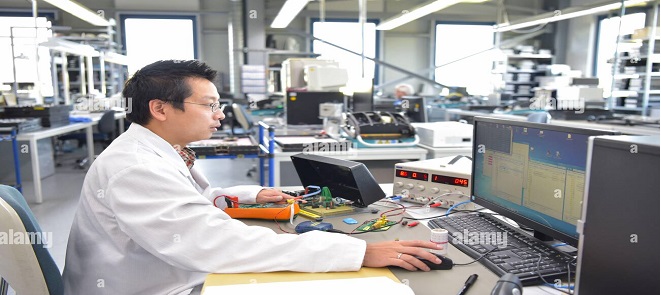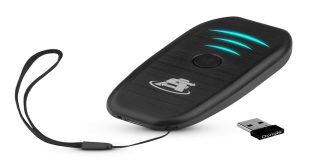Introduction
For hardware product developers, printed circuit board (PCB) fabrication and component assembly costs can significantly impact the overall budget and viability of a project. Having a sound process to estimate these costs during the initial stages of design, and identifying areas to optimize the costs without compromising quality is key.
This article provides an overview of methods to estimate and reduce PCB manufacturing and assembly costs to help manage project budgets effectively.
Estimating PCB Manufacturing Cost
The cost of getting PCBs fabricated depends on various factors:
PCB Parameters
- Board size – Directly proportional to area and quantity.
- Number of layers – Each additional layer increases cost.
- Board thickness – Thicker boards use more materials.
- Board finish – Immersion silver, ENIG, HASL, etc. have different costs.
- Materials – FR-4, high Tg, RF materials, all impact cost.
- Tolerance – Tighter tolerances require additional process steps.
- Certifications – UL, IPC increase cost for validation testing.
Quantity
- ** Economies of scale** – Unit cost drops with larger quantities due to fixed costs being spread over.
- Prototyping costs – Low volume batches have higher cost due to manual effort.
- Tooling costs – Amortized over batch for high volume production.
Fabricator
- Location – Labor, logistics, real estate costs vary.
- Quality – Costlier materials and processes for high quality boards.
- Yield – Good fabrication yield lowers cost.
Estimating PCB Assembly Cost
For stuffing or populating components on fabricated boards, key factors affecting cost are:
- Board complexity – Component count, density, fine-pitch parts.
- High labor content – Manual soldering or assembly raises cost.
- SMT vs. through-hole parts – SMT typically has lower cost at scale.
- Component sizes – Smaller 0201 or 01005 increase cost.
- Component types – BGAs, connectors add process steps.
- Lead-free vs leaded – Higher temperature requirements increase cost.
- Quantity – Lower cost per board in volume production.
- Test requirements – Additional validation steps add cost.
- Location – Labor costs, production efficiency vary.
PCB Cost Reduction Tips
Here are some techniques to lower PCB fabrication and assembly costs:
Optimizing PCB Layout
- Minimize board dimensions.
- Consolidate components to reduce layers when possible.
- Use standardized dimensions to maximize panel utilization.
- Avoid irregular board outlines. Use rounded corners.
- Allow tolerances of 8 mil line/space unless tighter needed.
Component Selection
- Choose commonly available parts in volume production.
- Minimize variety to enable bulk pricing.
- Avoid large components requiring hand assembly.
- Reduce fine pitch ICs like BGAs if possible.
- Discuss alternate options with vendors.
Quantity
- Build minimum viable quantity for prototyping.
- Amortize NRE and tooling costs over larger production runs.
- Review forecast and reserve capacity for volume discounts.
Fabrication Optimization
- Standard FR-4 material sufficient for most needs.
- Avoid ENIG finish unless needed for solderability or wire bonding.
- Don’t overspec thickness beyond functional needs.
- Work with fabricator to optimize panel layout.
- Take advantage of Rayming‘s PCB Instant Quote Calculator for detailed cost breakdowns.
Assembly Process
- Lean towards SMT components for automated assembly.
- Carefully specify tolerance only for required parameters.
- Validate solder mask clearance rules are not overspecified.
- Specify lead-free only if required for given market.
By using these optimization techniques throughout the design process without compromising quality, significant cost savings can be achieved.
Leveraging Supplier Relationships
Developing relationships with trusted fabrication and assembly partners provides opportunities for further cost and lead time reductions:
- Work with suppliers early in design process for design-for-manufacturing guidance.
- Discuss pain points like lead times, QC rejects openly to address.
- Explore vendor’s capabilities before considering changes that increase cost.
- Review forecasts periodically and plan capacities for volume discounts.
- Consolidate spend for higher volume pricing breaks.
- Negotiate pricing for full turnkey services including components.
Aligning with suppliers helps maximize cost-savings through open communication and long-term volume.
Conclusion
There are many factors affecting cost when budgeting for a new PCB product introduction. Having a sound process to estimate costs accurately in initial stages, and working methodically to optimize the PCB design, component selection, fabrication, and assembly processes allows managing program costs proactively. Partnering with experienced suppliers provides further opportunities. Disciplined application of these cost reduction techniques results in quality products manufactured at optimized cost levels.
Frequently Asked Questions (FAQs) About PCB Cost Estimation and Reduction
Q: What are the main parameters that determine PCB fabrication cost?
A: Key factors are dimensions, layer count, quantities, thickness, materials, tolerance, finish and fabrication process quality.
Q: Does panelizing PCBs in production reduce cost?
A: Yes, manufacturing PCBs in arrays using panelization lowers overall cost through improved fabrication yield and material utilization.
Q: How can component selection reduce PCB assembly cost?
A: Using fewer component types, standard SMT packages, avoiding large SMTs like BGAs and using commercially available parts all help lower assembly costs.
Q: When is it justified to specify high-cost PCB materials?
A: When electrical performance like microwave RF, noise control demands it. Not needed for commercial grade reliability.
Q: How much cost difference is there between 2-layer and 4-layer PCBs?
A: As a rough estimate, 4-layer PCBs are typically 40-50% more expensive than 2-layer for the same board size.
 Isaiminia World Breaking News & Top Stories
Isaiminia World Breaking News & Top Stories




